#IoT Network Infrastructure Market
Explore tagged Tumblr posts
Text
Structured Cabling Market Expected to Grow to USD 34.74 Billion by 2034 | CAGR: 10.7%
Market Overview: The global structured cabling market was valued at USD 12.62 billion in 2024. It is anticipated to witness robust growth, reaching USD 13.94 billion in 2025 and further expanding to USD 34.74 billion by 2034, at a CAGR of 10.7% during the forecast period (2025–2034). This expansion is driven by rising demand for high-speed connectivity, data centers, and advanced communication…
#5G Infrastructure Market#data center infrastructure#digital transformation#fiber optic cables#IoT connectivity#IT infrastructure growth#network infrastructure#scalable cabling#smart buildings#structured cabling market
0 notes
Text
Why the Low Voltage Switchgear Market is Booming in 2025?

The low voltage switchgear market is growing rapidly in 2025 due to growth in electricity consumption, development of intelligent devices, and a strong emphasis on sustainability. Energy efficiency, digital transformation, and security are critical for industries and businesses, which leads to a high demand for new, robust, and intelligent switchgear. This article will discuss key drivers of market growth, emerging trends, and their impact on businesses and industries globally.
1. The Growing Demand for Electricity
Over the past few decades, the increasing demand for efficiency in power distribution systems has become ever imminent with the rise of general energy consumption. Rapid urban expansion, industrial development, and the emergence of data centers have been some of the major driving forces boosting the demand for low-voltage switchgear.
Global Electricity Demand on the Rise:
· The IEA projects electricity demand in developing nations will rise at a rate of 4% each year, as consumption steadily climbs.
· Data facilities and cloud computing require relentless power sources, amplifying the need for resilient switching equipment solutions capable of sustaining operations.
· The proliferation of electric vehicle charging points is compelling utilities to renovate distribution networks, ensuring functionality can accommodate increased demand.
Modernization spreads as industries broaden their scope, making electrically-reliable infrastructure an imperative; low voltage switchgear has become integral to conveying energy throughout the grid in a secure and effective manner.
2. Smart & Digital Switchgear: The Industry’s Future
Traditional switchgear technology has evolved rapidly with the integration of intelligent networking capabilities, making electrical distribution safer, more efficient, and easier to monitor remotely. The new digital switchgear incorporates IoT, AI, and cloud-based monitoring solutions to provide real-time insight into energy usage. This allows businesses to proactively optimize performance and reduce costs through more proactive maintenance strategies.
Major Developments in Intelligent Switchgear by 2025:
✅Online Sensor Networks: Constant telemetry from devices throughout the system helps pinpoint potential weaknesses before failures occur.
✅Self-learning Circuitry: AI-powered hardware and software automatically analyze usage patterns to forecast repairs, minimize outages, and heighten uptime.
✅Wireless Remote Management: Mobile apps and web dashboards give administrators off-site control over power flows to streamline usage according to need.
✅Modular Construction: Interchangeable, compact components facilitate scaling and retrofitting within varied infrastructure environments.
The shift toward automated smart grids and Industry 4.0 production is substantially contributing to the booming market for intelligent switchgear solutions. Widespread installation of these next-generation systems will transform electrical distribution networks.
3. Rising Emphasis on Energy Efficiency & Sustainability
Governments and industries worldwide have increasingly pushed for greener, more energy-efficient power solutions in recent years. This has led electrical equipment manufacturers to develop eco-friendly switchgear technologies that considerably minimize energy loss during transmission and help reduce overall carbon footprints.
Sustainable Advancements in Low Voltage Switchgear Design:
Alternative gases to SF6: Traditional switchgear commonly uses SF6 due to its insulating and arc-quenching capabilities, however this gas has an extremely high global warming potential. Many switchgear producers have since designed SF6-free solutions that substitute the highly potent SF6 with other gases that are safer for the environment.
Energy-Efficient Designs: Optimizing circuitry and components has allowed switchgear to conduct electricity with negligible power loss, enabling connected systems to leverage nearly every watt of power. Careful engineering further trims excess material use and redundant parts.
Renewable Energy Integration: Low voltage switchgear has become increasingly vital in smoothly and reliably integrating power from solar arrays and wind farms into existing electrical networks. Without robust switchgear management, it would be difficult for clean energy sources to efficiently feed power onto transmission lines.
With the implementation of more stringent energy performance mandates in countries worldwide, businesses have sound business reasons for upgrading outdated switchgear infrastructure with advanced low loss solutions both to adhere to regulations and lower long-term energy expenditures.
4. Increasing Investments in Infrastructure & Industrialization
Governments and private investors alike are pouring billions into ambitious infrastructure projects around the world, generating skyrocketing demand for reliable low voltage switchgear solutions. From towering commercial skyscrapers to sprawling industrial complexes, and expanding metro networks to bustling international airports — countless utilities depend on robust yet cost-effective switching systems to ensure continuity of operations.
🔹 Key Infrastructure Drivers Stimulating Growth:
🏗️ Smart Cities Uplift Life: Sweeping investments in digital urbanization are revolutionizing everyday living through connected infrastructure that elevates efficiency.
🏭 Manufacturing Marvels: Production powerhouses across the globe are scaling new heights, intensifying the necessity for advanced low voltage distribution controls to support increased capacity.
🚆 Transportation Transformations: Rapid progress in rail electrification and proliferation of electric vehicles for land and air are necessitating increasingly resilient switchgear designs.
As global development marches forth, low voltage switchgear has become mission critical in enabling commercial and industrial progress through reliable power distribution. The worldwide infrastructure renaissance is cementing its importance for years to come.
5. Safety & Regulatory Compliance Are Driving Upgrades
Governments and regulatory bodies are increasingly implementing strict compliance standards to safeguard electrical infrastructure and minimize hazards, compelling upgrades across many industries. Potential calamities resulting from power faults or failures necessitate vigilance in maintaining reliable and resilient systems.
New Safety Regulations in 2025:
⚡ Updated IEC & NEC Standards: Stringent low voltage switchgear specifications mandated to bolster protection.
⚡ Arc Fault Protection Technology: Novel solutions critical to curb risks of electrical ignitions and incidents.
⚡ Mandatory Energy Audits: Organizations now required to optimize distribution for both personnel and operational efficiency through audits.
With approaching deadlines to satisfy evolving regulations, operators are proactively replacing outdated switchgear to conform with mounting compliance demands, contributing to an accelerating industry transformation.
6. The Rise of Data Centers & Digital Transformation
The digital sphere fundamentally relies upon data hubs that necessitate constant power and exceedingly reliable electric frameworks. As distributed computing, man-made brainpower, and IoT reception develop exponentially, ventures are putting vigorously in cutting edge low voltage switches to ensure their foundation from energy blackouts which could bring about gigantic budgetary misfortunes.
24/7 control is essential for operations yet breakdowns prompt critical money related setbacks. To guarantee uptime, focal points utilize auxiliary switches for extra dependability and security alongside far off checking abilities through IoT innovations which empower ongoing following and administration from anywhere. With worldwide distributed computing selection quickening at a quickening pace, interest for top notch low voltage switches arriving at new statures to guarantee frameworks stay online consistently.
7. Competitive Market & Technological Advancements
The low voltage switchgear sector has seen remarkable changes and fierce competition between prestigious brands. Manufacturers are pouring resources into innovation to craft smarter, smaller, and affordable switchboard alternatives.
🔹 Notable Advancements by 2025:
⚙️ Solid-state systems promise enhanced performance and lessened upkeep. Long and compound sentences mix with short ones.
⚙️ Remote accessibility through wireless means permits control and tracking from afar.
⚙️ Self-mending grids using AI to immediately spot and amend problems, maintaining dependable power seamlessly. Complex automation alleviates faults autonomously for maximum uptime.
Conclusion: The Future of Low Voltage Switchgear Looks Bright
Low Voltage Switchgear is forecasted to experience market growth in the year 2025 due to the growing electricity consumption in countries, the rising applications of smart technologies, the increased implementation of sustainability practices, the expansive growth in various industries, and safety regulations. As these industries are gradually moving to energy-efficient, AI-powered, and environmentally friendly switchgears, this demand is expected to increase further.
5 notes
·
View notes
Text
Satellite IoT Market Key Players Growth Strategies and Business Models to 2033
Introduction
The Satellite Internet of Things (IoT) market has been experiencing rapid growth in recent years, driven by increasing demand for global connectivity, advancements in satellite technology, and expanding IoT applications across various industries. As businesses and governments seek to leverage IoT for remote monitoring, asset tracking, and environmental sensing, satellite-based solutions have emerged as a crucial component of the global IoT ecosystem. This article explores the key trends, growth drivers, challenges, and future outlook of the satellite IoT market through 2032.
Market Overview
The satellite IoT market encompasses a range of services and solutions that enable IoT devices to communicate via satellite networks, bypassing terrestrial infrastructure constraints. This market is poised to grow significantly due to the increasing number of IoT devices, estimated to exceed 30 billion by 2030. The adoption of satellite IoT solutions is particularly prominent in industries such as agriculture, maritime, transportation, energy, and defense, where traditional connectivity options are limited.
Download a Free Sample Report:- https://tinyurl.com/5bx2u8ms
Key Market Drivers
Expanding IoT Applications
The proliferation of IoT devices across industries is fueling demand for satellite-based connectivity solutions. Sectors like agriculture, logistics, and environmental monitoring rely on satellite IoT for real-time data transmission from remote locations.
Advancements in Satellite Technology
The development of Low Earth Orbit (LEO) satellite constellations has significantly enhanced the capability and affordability of satellite IoT services. Companies like SpaceX (Starlink), OneWeb, and Amazon (Project Kuiper) are investing heavily in satellite networks to provide global coverage.
Rising Demand for Remote Connectivity
As industries expand operations into remote and rural areas, the need for uninterrupted IoT connectivity has increased. Satellite IoT solutions offer reliable alternatives to terrestrial networks, ensuring seamless data transmission.
Regulatory Support and Investments
Governments and space agencies worldwide are promoting satellite IoT initiatives through funding, policy frameworks, and public-private partnerships, further driving market growth.
Growing Need for Asset Tracking and Monitoring
Sectors such as logistics, oil and gas, and maritime heavily rely on satellite IoT for real-time asset tracking, predictive maintenance, and operational efficiency.
Market Challenges
High Initial Costs and Maintenance
Deploying and maintaining satellite IoT infrastructure involves significant investment, which may hinder adoption among small and medium enterprises.
Limited Bandwidth and Latency Issues
Despite advancements, satellite networks still face challenges related to bandwidth limitations and latency, which can impact real-time data transmission.
Cybersecurity Concerns
With the increasing number of connected devices, the risk of cyber threats and data breaches is a major concern for satellite IoT operators.
Industry Trends
Emergence of Hybrid Connectivity Solutions
Companies are integrating satellite IoT with terrestrial networks, including 5G and LPWAN, to provide seamless and cost-effective connectivity solutions.
Miniaturization of Satellites
The trend toward smaller, cost-efficient satellites (e.g., CubeSats) is making satellite IoT services more accessible and scalable.
AI and Edge Computing Integration
Artificial intelligence (AI) and edge computing are being incorporated into satellite IoT systems to enhance data processing capabilities, reduce latency, and improve decision-making.
Proliferation of Low-Cost Satellite IoT Devices
With declining costs of satellite IoT modules and sensors, adoption rates are increasing across industries.
Sustainable Space Practices
Efforts to minimize space debris and implement eco-friendly satellite technology are gaining traction, influencing the future of satellite IoT deployments.
Market Segmentation
By Service Type
Satellite Connectivity Services
Satellite IoT Platforms
Data Analytics & Management
By End-User Industry
Agriculture
Transportation & Logistics
Energy & Utilities
Maritime
Defense & Government
Healthcare
By Geography
North America
Europe
Asia-Pacific
Latin America
Middle East & Africa
Future Outlook (2024-2032)
The satellite IoT market is expected to grow at a compound annual growth rate (CAGR) of over 20% from 2024 to 2032. Key developments anticipated in the market include:
Expansion of LEO satellite constellations for enhanced global coverage.
Increased investment in space-based IoT startups and innovation hubs.
Strategic collaborations between telecom providers and satellite operators.
Adoption of AI-driven analytics for predictive monitoring and automation.
Conclusion
The satellite IoT market is on a trajectory of substantial growth, driven by technological advancements, increasing demand for remote connectivity, and expanding industrial applications. While challenges such as cost and security remain, innovations in satellite design, AI integration, and hybrid network solutions are expected to propel the industry forward. As we move toward 2032, satellite IoT will play an increasingly vital role in shaping the future of global connectivity and digital transformation across various sectors.Read Full Report:-https://www.uniprismmarketresearch.com/verticals/information-communication-technology/satellite-iot.html
2 notes
·
View notes
Text
Supply Chain Management in India: Building a Smarter Future

Supply Chain Management in India is gaining momentum as businesses across industries seek more agile and cost-effective ways to deliver products and services. The supply chain is no longer just a backend operation—it is a critical driver of customer satisfaction, efficiency, and business growth. In India, rapid technological adoption and government reforms are pushing the boundaries of what supply chains can achieve.
Why Supply Chain Management is Essential
With India's vast geography and complex logistics needs, supply chain management plays a vital role in keeping businesses competitive. Companies must efficiently coordinate the movement of raw materials, production, inventory, and distribution to meet growing market demands.
The advantages of a well-structured supply chain include:
Lower operational and transportation costs
Improved inventory and demand forecasting
Enhanced customer service and retention
Greater flexibility and scalability
Shorter delivery cycles
Essential Elements of Supply Chain Management
A typical supply chain comprises several interconnected stages, each of which must function smoothly for the entire system to be effective:
Sourcing: Identifying and acquiring raw materials or products
Manufacturing: Converting raw materials into finished goods
Warehousing: Storing inventory safely and efficiently
Logistics: Moving goods through transportation networks
Distribution: Ensuring final delivery to retailers or consumers
Together, these functions form the backbone of efficient supply chain operations.
Key Challenges in Indian Supply Chains
Although progress is being made, supply chain management in India still faces several persistent obstacles that must be addressed for full optimization:
Infrastructure Gaps: Roads, ports, and logistics parks need modernization in many areas
Fragmentation: Lack of integration between supply chain partners
High Logistics Costs: Often higher than global benchmarks
Limited Technology Adoption: Especially among SMEs and rural operators
Solving these issues is crucial for creating more agile and resilient supply chains.
Role of Technology in Supply Chain Optimization
Technology is a game-changer in Indian supply chain management. Companies are increasingly turning to advanced tools to improve transparency, responsiveness, and performance:
Data Analytics: Helps in demand planning and performance tracking
IoT Devices: Enable real-time shipment monitoring
AI and ML Algorithms: Optimize routing, reduce waste, and predict risks
ERP and Cloud Platforms: Enhance communication across departments and partners
These tools allow for quicker, smarter decisions and fewer delays.
Government Initiatives Boosting the Sector
The Indian government has recognized the strategic value of logistics and supply chains and introduced several policies to strengthen the sector:
National Logistics Policy: Designed to bring logistics costs down to 8% of GDP
PM Gati Shakti Initiative: Accelerates infrastructure development for smoother logistics
Sagarmala and Bharatmala Projects: Enhance port and road connectivity
Digital Reforms: GST and e-invoicing simplify compliance and tracking
These steps are improving the ease of doing business and enabling faster goods movement across the country.
Conclusion
Supply Chain Management in India is evolving into a smart, technology-driven discipline that is essential for long-term success in today’s business environment. Companies that adopt forward-thinking supply chain strategies, leverage new technologies, and align with national reforms are better equipped to thrive in both domestic and global markets.
Summary Points:
Efficient supply chains cut costs and enhance delivery performance.
Core functions include sourcing, warehousing, logistics, and distribution.
Technology like AI and IoT is revolutionizing the Indian supply chain landscape.
Government policies are accelerating supply chain and logistics development.
#Supply Chain Management in India#freightforwarding#transportation#cargo services#cargo shipping#shipping
1 note
·
View note
Text
Why Digital Transformation Fails – and How to Make It Work for Your Business
What Causes Digital Transformation to Fail?
Many organizations begin digital initiatives with big goals but end up with underwhelming results. The reasons are rarely technical. More often, failure stems from unclear direction, lack of leadership alignment, resistance to change, and absence of the right digital transformation company to guide the process.
Digital transformation services are not one-size-fits-all. When businesses skip foundational planning or ignore employee adoption, even the most advanced technology won’t succeed. Poor integration of digital transformation solutions, misaligned KPIs, and underinvestment in change management also contribute to project breakdowns.
Why It Matters to Get It Right
Success brings more than digital capabilities. Businesses that get it right see measurable results in performance, cost reduction, customer experience, and scalability. Those that don’t face stagnation and a competitive disadvantage.
Working with digital transformation companies that offer comprehensive digital innovation consulting increases the likelihood of sustainable outcomes. These firms design a roadmap, align goals, and ensure buy-in from all departments.
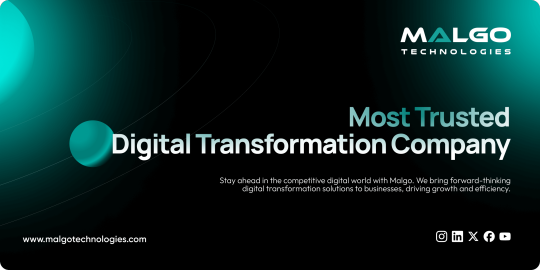
Features That Successful Digital Transformation Companies Offer
Strategic Planning
Clear business case aligned with leadership objectives
Measurable KPIs tied to outcomes
Integrated Technology Frameworks
Cloud computing for digital transformation
AI and cloud solutions for digital transformation
Business process automation customized to specific workflows
Scalable Digital Transformation Services
Designed to fit SMEs and large enterprises
Vendor-agnostic tools for flexible infrastructure
Change Readiness and Training Support
Ongoing support for employee adoption
Communication plans for transparency
Benefits of Getting Digital Transformation Right
Lower operational costs through automation
Improved customer satisfaction via faster, personalized service
Real-time data insights to improve decision-making
Enhanced agility and adaptability to market demands
Digital transformation solutions that deliver results are backed by a full-service approach. Businesses should expect more than just a software rollout. Enterprise digital transformation requires culture shifts, business model updates, and new performance benchmarks.
Digital Transformation Case Studies: What Success Looks Like
Retail: Automated inventory and AI-driven pricing helped a regional chain increase profit margins by 22%.
Finance: A mid-sized bank reduced customer onboarding time from 5 days to 12 hours through business process automation.
Healthcare: A hospital network used IoT in digital transformation to improve patient monitoring, reducing ER wait times by 30%.
These results were possible by partnering with digital transformation consulting experts who tailored solutions to business challenges, not just technology gaps.
How to Choose a Digital Transformation Partner
Picking the right partner is critical. Businesses should look beyond cost and evaluate capabilities:
Ask for real digital transformation case studies.
Compare digital transformation solutions based on outcomes.
Evaluate long-term support for cloud computing, AI, and process automation.
Search queries like "Best digital transformation companies in [location]" or "How to choose a digital transformation partner" are common starting points. Companies must be ready with real answers when users are researching.
Cost of Digital Transformation Services for SMEs
Small to medium enterprises often believe digital solutions are beyond budget. But many digital transformation services now offer phased rollouts. These allow companies to gain initial value without overcommitting resources.
Cloud computing, for example, lets companies pay for what they use. Business process automation can be implemented in critical departments first. This phased approach reduces upfront investment and builds momentum.
Digital Innovation Consulting: The Differentiator
Not all transformation begins with software. Often, digital innovation consulting is the first step. Consulting focuses on:
Identifying opportunity areas
Defining a strategic roadmap
Prioritizing use cases based on ROI
Without this step, many companies waste time and budget solving problems that don’t align with their actual goals.
Digital Transformation Strategy That Works
A successful digital transformation strategy includes:
Executive alignment
Department-level accountability
Clear milestones and review cycles
Continuous improvement model
Working with a digital transformation company that uses this structured approach gives businesses the advantage. Digital transformation solutions built on these principles are more sustainable and more scalable.
Top Mistakes That Lead to Failure
No defined owner or executive sponsor
Treating it as an IT project, not a business priority
Ignoring staff training and adoption
Choosing the wrong digital transformation partner
Underestimating cultural resistance
These mistakes are avoidable when companies ask the right questions and invest in proper planning and guidance.
What Success Requires
Clear business objectives
Supportive leadership
Integration across cloud computing, AI, and automation
Ongoing assessment of performance
This Is Much More Important: Include LSI and Long-Tail Keywords
Google rewards content that’s useful and specific. This blog includes:
Long-Tail Keywords: cost of digital transformation services for SMEs, how to choose a digital transformation partner, digital transformation case studies
LSI Keywords: digital innovation consulting, business process automation, enterprise digital transformation, IoT in digital transformation, cloud computing for digital transformation
High-Volume Short-Tail Keywords: digital transformation services, digital transformation solutions, digital transformation consulting, digital transformation company, digital transformation strategy
Digital initiatives don’t fail because of technology—they fail due to poor planning and execution. Businesses ready to succeed need more than software. They need structured guidance, practical solutions, and a partner who understands what works.
Ready to move beyond outdated technology? connect with a digital transformation company that delivers proven digital transformation services. Schedule a no-pressure consultation today and discover how tailored digital transformation solutions can work for your business.
1 note
·
View note
Text
Rajasthan’s Innovation-Driven Growth to a Digitally Empowered Workforce: Col Rajyavardhan Rathore


The Vision for a Digitally Empowered Rajasthan
The goal is clear: make Rajasthan a leader in digital innovation and skill development, ensuring that its workforce is ready for a future dominated by technology. This vision includes:
Modern Infrastructure: Establishing IT hubs, smart cities, and innovation centers.
Skilled Workforce: Upskilling youth with digital tools and technologies.
Startup Ecosystem: Creating an environment conducive to entrepreneurship.
Key Pillars of Rajasthan’s Innovation-Driven Growth
1. Smart Cities and Digital Infrastructure
Rajasthan is focusing on creating smart cities with advanced digital infrastructure, including:
Public Wi-Fi Networks: Ensuring seamless internet access for all.
E-Governance: Digitizing public services for transparency and efficiency.
2. Education and Skill Development
Digital Literacy Programs: Training citizens, especially in rural areas, to use technology effectively.
IT Training Institutes: Partnering with tech companies to offer specialized courses in AI, machine learning, and blockchain.
3. Promoting Startups and Innovation
Rajasthan is becoming a hotspot for startups with initiatives like:
Rajasthan Startup Policy: Providing funding, mentorship, and incubation for startups.
Innovation Hubs: Centers to foster collaboration and creativity among young entrepreneurs.
4. Industry 4.0 Adoption
Industries in Rajasthan are adopting cutting-edge technologies to boost productivity, including:
Automation in Manufacturing: Robotics and IoT to streamline processes.
Agri-Tech Solutions: Drones and AI for smarter farming practices.
Government Initiatives Driving Digital Transformation
1. Rajasthan IT/ITES Policy
Offering tax incentives and subsidies to IT companies.
Promoting investments in software development, BPOs, and data analytics.
2. Digital Rajasthan Mission
Connecting every village with high-speed internet.
Training women and marginalized communities to ensure inclusivity.
3. Rajasthan DigiSkill Program
Focused on creating a digitally literate workforce by 2025.
Courses include coding, app development, and digital marketing.
Impact on Rajasthan’s Workforce
Upskilling for the Future
Rajasthan is preparing its youth for the jobs of tomorrow by:
Integrating coding and STEM education into school curriculums.
Offering scholarships and incentives for IT-related higher education.
Job Creation in Emerging Sectors
IT and software development are generating thousands of jobs.
Growth in startups and innovation hubs is fostering entrepreneurship.
Inclusivity in Digital Growth
Focus on training women and rural communities to bridge the digital divide.
Col Rajyavardhan Rathore’s Role in Digital Transformation
Col Rathore has been a vocal advocate for leveraging technology to empower the people of Rajasthan. His contributions include:
Policy Advocacy: Pushing for policies that prioritize innovation and digital literacy.
Youth Engagement: Encouraging young minds to explore careers in IT and entrepreneurship.
Community Outreach: Promoting the benefits of digital transformation in rural areas.

Success Stories of Digital Rajasthan
1. Bhamashah Yojana
One of the first initiatives to leverage digital platforms for direct benefit transfers, empowering women and ensuring financial inclusivity.
2. Rajasthan Sampark
A citizen grievance redressal system that ensures transparency and accountability through digital means.
3. RajNET
A unified network connecting the state’s administrative and public service systems with high-speed internet.
Challenges and Solutions
Challenges
Digital Divide: Ensuring access to technology in remote areas.
Skilled Workforce Shortage: Meeting the demand for advanced IT skills.
Infrastructure Gaps: Lack of high-speed internet in some regions.
Solutions
Targeted Programs: Focused digital literacy drives in rural areas.
Public-Private Partnerships: Collaborations with tech giants to set up training centers.
Expanding Connectivity: Investments in fiber optics and satellite internet.
The Road Ahead: A Digital Rajasthan
Rajasthan is on the cusp of a digital revolution. With continued focus on innovation, skill development, and inclusive growth, the state is poised to become a beacon of digital excellence in India. Visionaries like Col Rajyavardhan Rathore are ensuring that this transformation benefits every citizen, bridging gaps and unlocking new opportunities.
As Rajasthan strides forward, it not only redefines its identity but also sets an example for other states to emulate.
2 notes
·
View notes
Text
Future of Energy Harvesting System Market: Innovations & Opportunities
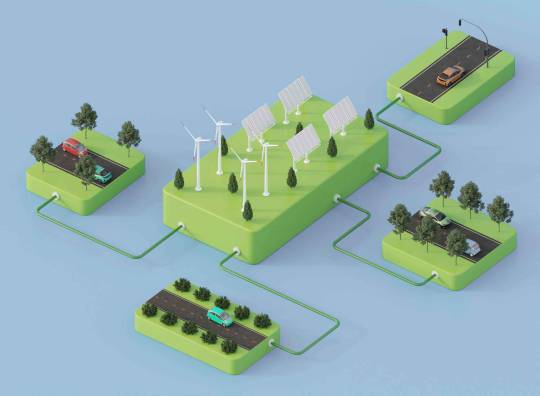
Executive Summary: A Transformational Shift in Energy Utilization
The global energy landscape is undergoing a revolutionary transformation, driven by the rising need for sustainable power sources. Energy Harvesting System Market, which convert ambient energy into electrical energy, are at the forefront of this transition. From reducing battery dependency to enabling long-lasting power for low-energy electronics, energy harvesting is not just an innovation—it is the future of decentralized energy systems. This comprehensive analysis explores market trends, technological advancements, regional dynamics, and competitive strategies shaping the Energy Harvesting System market from 2024 to 2032.
Request Sample Report PDF (including TOC, Graphs & Tables): https://www.statsandresearch.com/request-sample/18569-global-energy-harvesting-system-market
Energy Harvesting System Market Overview: Growth Fueled by Smart Technologies and IoT
The Energy Harvesting System market is experiencing accelerated growth, propelled by the exponential expansion of the Internet of Things (IoT), wearable technology, smart buildings, and industrial automation. As power efficiency becomes a paramount concern, EHS solutions are poised to dominate in areas where battery replacement is infeasible or undesirable.
Key Energy Harvesting System Market Drivers
Escalating demand for wireless sensor networks in industrial automation
Increasing adoption of self-powered wearable electronics
Expansion of smart city infrastructure worldwide
Rising awareness of environmental sustainability
Technological breakthroughs in micro-energy sources
Get up to 30%-40% Discount: https://www.statsandresearch.com/check-discount/18569-global-energy-harvesting-system-market
Energy Harvesting System Market Segmentation by Technology Type
Light Energy Harvesting
Light—especially solar—is the most widely adopted energy harvesting source. Modern photovoltaic (PV) cells integrated into smart sensors enable continuous data transmission, particularly in outdoor and well-lit indoor environments.
Vibration Energy Harvesting
Using piezoelectric, electrostatic, and electromagnetic technologies, vibration-based systems extract energy from motion. This segment is gaining traction in transportation, manufacturing equipment, and infrastructure monitoring.
RF (Radio Frequency) Energy Harvesting
RF harvesting utilizes ambient wireless signals—Wi-Fi, cellular, and TV broadcasts—as power sources. Though it generates smaller outputs, it is ideal for ultra-low-power IoT devices.
Thermal Energy Harvesting
Thermoelectric generators convert heat gradients into electricity. These are valuable in industrial settings with consistent thermal waste, such as oil & gas and automotive sectors.
Application Analysis: Sector-Wise Adoption and Impact
Industrial Applications
The industrial sector is the largest and fastest-growing segment due to widespread use in condition monitoring, predictive maintenance, and machine-to-machine communication. Energy harvesting minimizes downtime and reduces operational costs.
Household Applications
Smart home systems—thermostats, lighting, door locks—are increasingly powered by ambient sources. Energy harvesting eliminates wiring complexity, enhances aesthetics, and prolongs product life.
Commercial Applications
In commercial buildings, EHS supports lighting controls, HVAC automation, and occupancy sensors, driving energy efficiency and compliance with green building standards.
Regional Insights: Growth Hubs and Strategic Opportunities
North America
With robust investments in smart infrastructure and industrial automation, North America leads in technological adoption. The U.S. is a prime consumer due to strong regulatory incentives and innovation hubs.
Europe
Driven by stringent environmental policies and strong R&D investment, Europe showcases rapid uptake in energy harvesting for both consumer electronics and automotive applications.
Asia-Pacific
China, Japan, and India are emerging as manufacturing powerhouses for EHS components. Government-led smart city projects and massive IoT deployment in the region bolster demand.
Competitive Landscape: Strategic Initiatives and Market Leadership
The EHS market is moderately consolidated, with innovation-focused players driving growth through partnerships, acquisitions, and proprietary technology.
Leading Energy Harvesting System Market Participants
Texas Instruments – Renowned for ultra-low-power microcontrollers and energy management ICs.
STMicroelectronics – Offers piezoelectric and thermoelectric energy harvesting kits.
Honeywell International – Specializes in industrial-grade vibration and thermal harvesters.
EnOcean GmbH – Pioneer in wireless energy harvesting solutions for building automation.
Powercast Corporation – Dominant in RF-based harvesting for commercial and consumer applications.
Investment and R&D Trends
Significant capital is being invested in miniaturization, integration, and wireless communication protocols. R&D efforts focus on increasing conversion efficiency, hybrid harvesting systems, and AI-integrated energy management.
Strategic Recommendations for Stakeholders
OEMs: Prioritize integration of hybrid harvesting systems to enhance device versatility.
Investors: Focus on companies offering scalable platforms for IoT and industrial solutions.
Policymakers: Create incentive structures to accelerate deployment in infrastructure and transportation.
Startups: Innovate in niche areas such as biomedical implants and agricultural sensors.
Energy Harvesting System Market Forecast: 2024–2032
The global Energy Harvesting System market is projected to grow at a compound annual growth rate (CAGR) exceeding 10%, reaching a multi-billion-dollar valuation by 2032. The proliferation of wireless electronics and growing sustainability mandates will drive this robust expansion.
Future Outlook: Toward a Battery-Free Ecosystem
Energy harvesting is redefining how devices interact with their environment. By enabling continuous, maintenance-free operation, EHS is laying the groundwork for a future where billions of interconnected devices operate independently of batteries. The confluence of AI, 5G, and ambient energy will define the next phase of ubiquitous computing.
Purchase Exclusive Report: https://www.statsandresearch.com/enquire-before/18569-global-energy-harvesting-system-market
Conclusion
We are at the cusp of a paradigm shift in power generation for low-energy electronics. Energy harvesting is no longer a niche technology—it is an essential enabler of the sustainable, connected future. By adopting and investing in next-generation EHS, industries and governments can future-proof operations, enhance resilience, and lead in the transition toward net-zero energy infrastructure.
Our Services:
On-Demand Reports: https://www.statsandresearch.com/on-demand-reports
Subscription Plans: https://www.statsandresearch.com/subscription-plans
Consulting Services: https://www.statsandresearch.com/consulting-services
ESG Solutions: https://www.statsandresearch.com/esg-solutions
Contact Us:
Stats and Research
Email: [email protected]
Phone: +91 8530698844
Website: https://www.statsandresearch.com
1 note
·
View note
Text
Electrical Conduit Pipe Market Analysis By Segmentations, Top Key Players, Geographical Expansion, Future Development & Forecast 2034
Fact.MR, in its latest research report released recently, states that the worldwide electrical conduit pipe market stands at US$ 34,302.4 million in 2024, and is anticipated to grow at a 4.8% CAGR to reach a market value of US$ 54,819.8 million by the end of 2034. Market Research Report.
The size of the electrical conduit pipe market is likely to witness growth opportunities in emerging markets due to the development of e-commerce, which has greatly revolutionized the operations of businesses, including those involved in the production and supply of building and construction materials, like electrical conduit pipes. Growing online buying and widespread adoption of e-commerce platforms provide new opportunities and benefits for electrical conduit pipe manufacturers.
For More Insights into the Market, Request a Sample of this Report: https://www.factmr.com/connectus/sample?flag=S&rep_id=9412
Country-wise Insights
Fact.MR, a competitive intelligence and market research solutions provider, affirms in its recently released research report that by 2034, North America is estimated to have a 29.9% share in the global market. Ongoing and future residential and commercial buildings projects drive substantially the demand for electrical conduit pipes.
The United States is also expected to control 64.1% of the North American market in 2034. Government policies and higher investments in infrastructure development, such as residential, commercial, and industrial buildings, can fuel the demand for electrical conduit pipes. The establishment of smart cities and the use of IoT devices in urban infrastructure can cause higher demand for conduit systems to accommodate and safeguard the required wiring.
China is predicted to have a 59.5% market revenue share in the East Asia market by the year 2034. Expansion of the manufacturing industry in China, particularly in the production of electronics and electrical equipment, can fuel the need for conduit systems in industrial environments.
Category-wise Insights
On the basis of application, worldwide demand for electrical conduit pipe is expected to grow substantially in the IT and Telecommunication segment. The IT and telecommunication industry undergoes quick technological improvements and regular upgrading. Conduit systems enable one to be adaptable to evolving technologies by offering a modular and adjustable infrastructure for cabling installations.
The IT and Telecommunication portion of electrical conduit pipe is expected to maintain a market share of 52.5% by 2034. Electrical conduit pipes create a safe and neat route for installation and safeguarding data cables, fiber optic cables, and other communication wiring, which is most important in IT and telecommunication infrastructure where the protection and management of cables take precedence.
Conduit systems prevent electromagnetic interference, which is crucial for ensuring the reliability and integrity of data transmission in IT and telecommunication networks, particularly for preserving signal quality and preventing data loss or corruption.
Competitive Landscape
Key players within the electrical conduit pipe industry are adopting a variety of strategies in order to achieve their goals. The strategies include promoting innovation, embracing stringent quality control across their product ranges, forming strategic alliances, streamlining supply chain management systems, and constantly improving both their products and technologies.
Recent Development
In 2022, Atkore International Group Inc. acquired Elite Polymer Solutions, a leading High-Density Polyethylene tubing conduit manufacturer, successfully. Elite Polymer Solutions serves the telecom, utility, and transportation industries. The strategic purchase increases Atkore's portfolio of HDPE pipe products and expands its geography, allowing the company to capitalize on the increasing demand for underground protection in the electrical, utility, and telecommunications markets.
Wienerberger AG, Aliaxis Group S.A., Sekisui Chemical Co., Ltd., Atkore International Group Inc., China Lesso Group Holdings Ltd., Nan Ya Plastics Corp., Zekelman Industries Inc., Orbia Advance Corporation, OPW Corporation, are major players in the market.
Browse Full Report: https://www.factmr.com/report/electrical-conduit-pipe-market
Segmentation of Electrical Conduit Pipe Market Research
By Application :
Electrical Wire Cables
IT and Telecommunication
By Type :
Rigid Conduit Pipe
Flexible Conduit Pipe
By Region :
North America
Europe
East Asia
Latin America
Middle East & Africa
South Asia & Oceania
𝐂𝐨𝐧𝐭𝐚𝐜𝐭:
US Sales Office 11140 Rockville Pike Suite 400 Rockville, MD 20852 United States Tel: +1 (628) 251-1583, +353-1-4434-232 Email: [email protected]
1 note
·
View note
Text
Strengthening Edge Computing with CCF Certification: A Future-Ready Strategy
With edge computing emerging as a pervasive trend in digital infrastructure, organizations are compelled to revisit how they secure data processing, security, and connectivity. Cloud Computing Foundation Certification (CCF Certification) has now become mandatory in helping professionals deal with the intricacies of edge computing environments. With this cloud computing foundation certification, businesses can have their edge infrastructure operate efficiently and securely, thereby granting them a competitive advantage in the data economy.
Why Edge Computing Requires Cloud Knowledge
Edge computing is all about computing data nearer to where it's being created—at the edge of the network. From autonomous systems to IoT devices, new technology demands low-latency, real-time computing that traditional data centers can't always deliver. But combining edge computing with cloud infrastructure demands expertise in both. That's where a cloud computing foundation certification is priceless.
When experts take a cloud foundation course, they understand how to develop hybrid architectures that integrate local edge processing with central cloud services optimally. It is essential for the management of workloads, data synchronization, and security on distributed systems.
How CCF Certification Supports Edge Integration
Building Hybrid Architectures
The CCF course provides IT professionals with the ability to create hybrid cloud solutions. This is particularly important for edge deployments, where some data needs to be processed on-premise and critical insights and backups routed to the cloud. With a cloud computing foundation certification, businesses can provide unbreakable integration and increased operational efficiency.
Improving Edge Security Protocols
Edge environments have a greater exposure to security risks based on their distributed nature. Cloud foundation certification instills a solid foundation in cloud security best practices. Certified experts can leverage strong encryption, identity management, and access controls, securing sensitive data both at the edge and in the cloud.
Streamlining Data Management
The information created at the edge needs to be filtered, analyzed, and routed in a cost-effective way. Cloud foundation certification guarantees experts know how to handle data lifecycles, optimize bandwidth consumption, and make processing tasks automatic. This brings about lower latency and better response times.
Backing IoT Infrastructure
Edge computing is central to the Internet of Things (IoT), with devices generating and sending data in real-time. CCF Certification allows professionals to implement scalable, secure cloud-connected IoT solutions that can process enormous data surges without affecting performance.
Future-Proofing IT Teams
As edge computing expands, professionals with cloud and edge skills will be in greater demand. Focusing on a cloud computing certification guarantees your workforce is ready to meet future infrastructure needs. CCF Certification promotes adaptability, problem-solving, and innovation—qualities necessary to manage new technologies.
The Role of Cloud Computing Certification in Strategic Growth
Organizations that prioritize cloud computing foundation certification position themselves for strategic growth. They can deploy and manage cutting-edge technologies with greater confidence, attract top talent, and reduce operational risk. By embedding cloud expertise into their teams, companies are also better equipped to meet evolving compliance standards and industry regulations.
Additionally, the well-trained personnel with a cloud computing certification support the digital reputation of the company. Partnerships and customers prefer to deal with businesses that invest in secure, scalable, and up-to-date infrastructure—a vital ingredient in today's competitive market.
For more details : https://www.gsdcouncil.org/certified-cloud-computing-foundation
Contact no : +41 41444851189
1 note
·
View note
Text
IT companies in Coimbatore :Hiring freshers role and benefit
Coimbatore has emerged as a preferred location for IT professionals due to its affordable cost of living, high-quality educational institutions, and the city’s well-developed infrastructure. Unlike metropolitan cities, IT companies in Coimbatore offers a balanced lifestyle with a lower cost of living, which appeals to many working professionals. With a pool of skilled talent graduating from nearby engineering and technical institutions, Coimbatore is an ideal place for IT companies to find qualified candidates for various roles, making it a hot spot for job seekers.

Who Are the Leading IT Companies in Coimbatore?
The city hosts several top IT companies, including Tata Consultancy Services (TCS), Cognizant, Wipro, and Robert Bosch, along with growing regional players like KGISL and Aspire Systems. These companies offer a variety of services from software development to business consulting and automation solutions. Working with such companies not only provides a chance to learn and grow but also adds credibility to one's career profile. Their well-established infrastructure and focus on training employees make them attractive employers in the region.
Best IT Companies in Coimbatore :
Coimbatore, one of Tamil Nadu's major industrial hubs, has seen significant growth in the IT sector. Known for its skilled workforce, affordable infrastructure, and a supportive business ecosystem, the city hosts many IT companies that offer a wide range of services from software development to digital transformation.
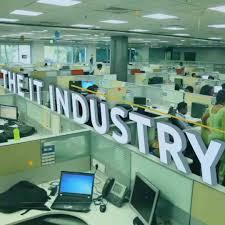
Here’s a look at some of the best IT company in Coimbatore :
Accenture :

Global consulting and technology services company providing full-fledged IT and business process services.
ThoughtWorks:

Leaders in software consultancy to get custom software developed through agile methodology and digital transformation
Payoda Technologies :

focuses primarily on aspects of digital transformation, analytics, cloud solution development and software development.
Sridhar Vembu Institute of Technology (Zoho Corp) :

It is based in Chennai; however, the innovation and research wing of Zoho is based in Coimbatore, where it works on software product development.
Softratech Info :
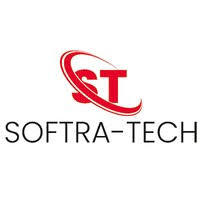
The company provides IT solutions, consultancy, software development, and support services.
Repute Network :

A technology-based company, focusing on digital payments, financial technologies, and blockchain solutions
Mindnotix Technologies :
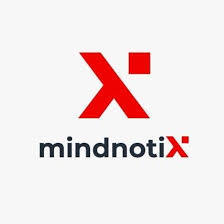
A technology firm, developing web and mobile applications as well as AR/VR-based applications, and AI-driven applications.
Kumaraguru College of Technology :

Technology Business Incubator (KCT-TBI) - Incubates start-ups and tech innovation in IoT, AI, robotics, and software solutions.
Revature India :

Trains and develops software services and products, focusing on creating technical talent for the global market.
i2i Software Solutions :

Offers end-to-end software solutions and IT services, with a focus on custom development.
eQuadriga Software Pvt Ltd :

is an IT services company focusing on software development, mobile apps, and digital marketing.
Conclusion :
Coimbatore’s IT sector is full of opportunities for freshers, thanks to a supportive ecosystem of companies and a growing tech community. From MNCs like Cognizant and Bosch to dynamic startups, IT companies in Coimbatore provides ample options for fresh graduates eager to kickstart their careers. With a focus on learning, networking, and skill development, freshers can build a promising career in this thriving city.
#it company#IT companies in Coimbatore#internship#freshers it job#jobseekers#jobs#employment#careers#workplace#inside job
3 notes
·
View notes
Text
Mastering IT Consulting: A Blueprint for Excellence and Innovation
In the ever-changing landscape of technology, IT consultants play a crucial role in helping businesses harness the full potential of their IT investments. Effective IT consulting is not just about implementing technology but also about transforming businesses through strategic insight and cutting-edge solutions. This article outlines a comprehensive blueprint for IT consultants seeking to master their craft and deliver excellence and innovation to their clients.
Cultivating Expert Knowledge and Versatility
At the core of successful IT consulting lies a profound depth of knowledge across various technological domains. Consultants must excel in areas such as network infrastructure, software development, cybersecurity, and data analytics. However, technical expertise alone is not enough. A versatile consultant also understands various industries and their unique challenges, enabling them to tailor solutions that align with the specific business models and market conditions of their clients.
Continuous professional development is essential. IT consultants should engage in lifelong learning, acquire certifications, and attend workshops and seminars to keep up with the rapid advancements in technology. This dedication not only enhances their skill set but also positions them as thought leaders in the field.
Strategic Client Engagement
Understanding the client's vision and goals is paramount. Successful IT consultants use a consultative approach to deeply engage with their clients, ensuring that proposed solutions foster the client's strategic objectives. This involves thorough assessments of the client’s current IT landscape, identifying gaps, and understanding future aspirations.
Building trust through transparency and effective communication is crucial. Consultants should establish clear communication channels and provide regular updates to keep all stakeholders informed. This openness helps in managing expectations and builds a foundation for long-term partnerships.
Innovation as a Service
Innovation should be at the heart of every consulting project. IT consultants are often called upon not just to solve problems but to find new ways to do things better, faster, and more cost-effectively. This requires creativity in applying technology in ways that disrupt traditional business processes positively.
Consultants should leverage emerging technologies such as artificial intelligence, machine learning, and the Internet of Things (IoT) to drive business innovation. They should also advocate for adopting agile methodologies, which allow businesses to be more adaptive and responsive to changes in the market.
Effective Project Management and Implementation
Delivering on promises is as important as making them. Effective project management is key to the successful implementation of IT solutions. Consultants should possess strong organizational skills to manage multiple projects efficiently, ensuring they are completed on time, within scope, and on budget.
Implementation success is heavily dependent on the consultant’s ability to handle change management. They must ensure that all users are comfortable with new technologies, providing training and support to facilitate a smooth transition. Furthermore, post-implementation reviews are crucial to evaluate the success of the project and learn lessons for future engagements.
Robust Risk Management
Navigating potential risks is critical in IT consulting. Consultants must proactively identify and mitigate risks associated with IT projects, including technical failures, security breaches, and project overruns. Developing comprehensive risk management strategies helps protect the client’s interests and ensures project longevity.
Mastering IT consulting requires a blend of deep technical expertise, strategic acumen, effective communication, and a commitment to continuous improvement. By focusing on these areas, consultants can provide significant value to their clients, helping them to navigate complex IT challenges and leverage technology for business success. As IT consultants continue to evolve and adapt to new technologies and market demands, their role as catalysts for change and innovation becomes more critical than ever.
1 note
·
View note
Text
FPGA Market - Exploring the Growth Dynamics

The FPGA market is witnessing rapid growth finding a foothold within the ranks of many up-to-date technologies. It is called versatile components, programmed and reprogrammed to perform special tasks, staying at the fore to drive innovation across industries such as telecommunications, automotive, aerospace, and consumer electronics. Traditional fixed-function chips cannot be changed to an application, whereas in the case of FPGAs, this can be done. This brings fast prototyping and iteration capability—extremely important in high-flux technology fields such as telecommunications and data centers. As such, FPGAs are designed for the execution of complex algorithms and high-speed data processing, thus making them well-positioned to handle the demands that come from next-generation networks and cloud computing infrastructures.
In the aerospace and defense industries, FPGAs have critically contributed to enhancing performance in systems and enhancing their reliability. It is their flexibility that enables the realization of complex signal processing, encryption, and communication systems necessary for defense-related applications. FPGAs provide the required speed and flexibility to meet the most stringent specifications of projects in aerospace and defense, such as satellite communications, radar systems, and electronic warfare. The ever-improving FPGA technology in terms of higher processing power and lower power consumption is fueling demand in these critical areas.
Consumer electronics is another upcoming application area for FPGAs. From smartphones to smart devices, and finally the IoT, the demand for low-power and high-performance computing is on the rise. In this regard, FPGAs give the ability to integrate a wide array of varied functions onto a single chip and help in cutting down the number of components required, thereby saving space and power. This has been quite useful to consumer electronics manufacturers who wish to have state-of-the-art products that boast advanced features and have high efficiency. As IoT devices proliferate, the role of FPGAs in this area will continue to foster innovation.
Growing competition and investments are noticed within the FPGA market, where key players develop more advanced and efficient products. The performance of FPGAs is increased by investing in R&D; the number of features grows, and their cost goes down. This competitive environment is forcing innovation and a wider choice availability for end-users is contributing to the growth of the whole market.
Author Bio -
Akshay Thakur
Senior Market Research Expert at The Insight Partners
2 notes
·
View notes
Text
Overcoming Challenges in Data Integration: Insights from Consulting Experts
Data integration for enterprises can take longer due to technological, financial, and time constraints. As a result, modifying data strategies to mitigate risks like incompatibility between many tools or budget overruns is crucial. Companies must also prepare for new compliance requirements to ensure ethical data operations. This post will explore such challenges in data integration while listing valuable insights from consulting experts in this domain.
What is Data Integration?
Data integration merges data from disparate origins and presents it to maximize comprehension, consolidation, and summarization effectiveness. Integrated data views rely on data ingestion, preparation, and advanced insight extraction. It also streamlines the data operations services across regulatory report creation, helpdesks, and 360-degree client life cycle management.
All data integration strategies involve the extract, transform, and load (ETL) pipelines regardless of business units or target industries. At the same time, the scope of planning and quality assurance in each process varies due to domain-specific data classification factors.
For instance, the accounting departments must handle extensive numerical data while interpreting legal and organizational requirements for transparency. On the other hand, production engineering and design professionals will use visualizations to improve goods or service packages. Accordingly, accountants will use unique tools distinct from engineers’ software.
Later, the leaders might want a comprehensive overview of the synergy between these departments. Therefore, they must determine efficient data integration strategies. The data will move between several programs, carrying forward many updates throughout a project’s progression based on those roadmaps.
Overcoming the Challenges in Data Integration Using Insights from Consulting Experts
1| Data Quality Hurdles
Linking, consolidating, and updating data from several sources will exponentially increase the quality-related threats. For instance, consider multimedia assets from social networks or unreliable news outlets. They can help your secondary market research and social listening initiatives. However, you want to verify the authenticity of gathered intelligence to avoid inaccurate data ingestion.
Evaluating relevance, freshness, and consistency is essential to data quality assurance from creation to archival. So, corporations have started leveraging data lifecycle management to boost dataset integrity, helping make integration less of a hassle.
Insights:
Most consulting experts suggest developing ecosystems that check and recheck quality metrics at each stage of a data integration lifecycle. Moreover, they recommend maintaining periodic data backups with robust version control mechanisms. Doing so will help quality preservation efforts if errors arise after a feature update or a malicious third party is likely to break the system using malware.
2| Networking and Computing Infrastructure Problems
Legacy hardware and software often introduce bottlenecks, hurting data integration’s efficiency. Modern integration strategies demand more capable IT infrastructure due to the breakthroughs like the internet of things (IoT), 5G networks, big data, and large language models. If a company fails to procure the necessary resources, it must postpone data integration.
Technologies integral to capturing, storing, checking, sorting, transferring, and encrypting data imply significant electricity consumption. Besides, a stable networking environment with adequate governance implementations enables secure data transactions. The underlying computing infrastructure is not immune to physical damage or downtime risks due to maintenance mishaps.
What Consulting Experts Say:
Enterprises must invest in reliable, scalable, and efficient hardware-software infrastructure. This will benefit them by providing a stable working environment and allowing employees to witness productivity improvements. Upgrading IT systems will also enhance cybersecurity, lowering the risk of zero-day vulnerabilities.
3| Data Availability Delays
Governments, global firms, educational institutions, hospitals, and import-export organizations have a vast network of regional offices. These offices must also interact with suppliers, contractors, and customers. Due to the scale of stakeholder engagement, reports concerning office-level performance and inventory might arrive late.
Underproductive employees, tech troubleshooting, slow internet connectivity, and a poor data compression ratio will make data sourcing, updating, and analyzing inefficient. As a result, a data integration officer must address time-consuming activities through strategic resource allocation. If left unaddressed, delays in data delivery will adversely affect conflict resolution and customer service.
Expert Insights:
Train your employees to maximize their potential and reduce data acquisition, categorization, and transformation delays. Additionally, you will want to embrace automation through artificial intelligence (AI) applications. Find methods to increase the data compression ratio and accelerate encryption-decryption processing cycles. These measures will help accomplish near-real-time data integration objectives.
4| Vendor Lock-ins
A vendor lock-in results from inconvenience and restrictions when a client wants to switch to another service provider or toolkit. Although data integration platforms claim they celebrate the ease of migrating databases with competitors, they might covertly create vendor lock-ins.
For instance, some data sourcing and sorting ecosystems might limit the supported formats for bulk export commands. Others will use misleading methods to design the graphical user interface (GUI) of account deletion and data export features. They involve too many alerts or generate corrupt export files.
Practical Insights:
Combining multiple proprietary and open-source software tools offers the best cost optimization opportunities. When you select a data vendor, audit the tools the willing data integration providers use to deliver their assistance. Do they use a completely proprietary system based on an unknown file format unsupported by other platforms?
Finally, you must check all the data import, export, and bulk transfer options in vendors’ documentation. After you check a data firm’s current client base, track its online ratings and scan for red flags indicating potential vendor lock-ins.
5| Data-Related Ethical and Legal Liabilities
Confidentiality of investor communication and stakeholders’ privacy rights are two components of legal risk exposure due to enterprise data integration. Additionally, brands must interpret industry guidelines and regional directives for regulatory disclosures.
They must comply with laws concerning personally identifiable information (PII) about employees and customers. Otherwise, they will attract policymakers’ ire, and customers will lose faith in brands that do not comply with the laws of their countries.
Insights:
Consulting experts recommend collaborating with regional legal teams and global governance compliance specialists. After all, mitigating legal risks can help increase business resilience.
Improved compliance ratings have also benefited several brands wanting to be attractive to impact investors. Meanwhile, customers demanding ethical data operations at business establishments love supporting brands with an exceptional governance culture.
Conclusion
Most brands need specialists' help to develop consolidated data views during reporting because they have flawed data integration strategies. So, they require trustworthy insights from reputed consulting experts with a proven track record of overcoming challenges in data integration. The selected data partners must excel at ETL implementation, governance compliance, and data quality management (DQM).
The corporate world champions data-centric business development. Understandably, the need for scalable data integration reflects the increased stakeholder awareness regarding the importance of connecting disparate data sources. With transparent, fast, and accurate data, organizations will enhance their competitive edge amid this intense digital transformation race.
3 notes
·
View notes
Text
From Novice to Pro: Master the Cloud with AWS Training!
In today's rapidly evolving technology landscape, cloud computing has emerged as a game-changer, providing businesses with unparalleled flexibility, scalability, and cost-efficiency. Among the various cloud platforms available, Amazon Web Services (AWS) stands out as a leader, offering a comprehensive suite of services and solutions. Whether you are a fresh graduate eager to kickstart your career or a seasoned professional looking to upskill, AWS training can be the gateway to success in the cloud. This article explores the key components of AWS training, the reasons why it is a compelling choice, the promising placement opportunities it brings, and the numerous benefits it offers.

Key Components of AWS Training
1. Foundational Knowledge: Building a Strong Base
AWS training starts by laying a solid foundation of cloud computing concepts and AWS-specific terminology. It covers essential topics such as virtualization, storage types, networking, and security fundamentals. This groundwork ensures that even individuals with little to no prior knowledge of cloud computing can grasp the intricacies of AWS technology easily.
2. Core Services: Exploring the AWS Portfolio
Once the fundamentals are in place, AWS training delves into the vast array of core services offered by the platform. Participants learn about compute services like Amazon Elastic Compute Cloud (EC2), storage options such as Amazon Simple Storage Service (S3), and database solutions like Amazon Relational Database Service (RDS). Additionally, they gain insights into services that enhance performance, scalability, and security, such as Amazon Virtual Private Cloud (VPC), AWS Identity and Access Management (IAM), and AWS CloudTrail.
3. Specialized Domains: Nurturing Expertise
As participants progress through the training, they have the opportunity to explore advanced and specialized areas within AWS. These can include topics like machine learning, big data analytics, Internet of Things (IoT), serverless computing, and DevOps practices. By delving into these niches, individuals can gain expertise in specific domains and position themselves as sought-after professionals in the industry.

Reasons to Choose AWS Training
1. Industry Dominance: Aligning with the Market Leader
One of the significant reasons to choose AWS training is the platform's unrivaled market dominance. With a staggering market share, AWS is trusted and adopted by businesses across industries worldwide. By acquiring AWS skills, individuals become part of the ecosystem that powers the digital transformation of numerous organizations, enhancing their career prospects significantly.
2. Comprehensive Learning Resources: Abundance of Educational Tools
AWS training offers a wealth of comprehensive learning resources, ranging from extensive documentation, tutorials, and whitepapers to hands-on labs and interactive courses. These resources cater to different learning preferences, enabling individuals to choose their preferred mode of learning and acquire a deep understanding of AWS services and concepts.
3. Recognized Certifications: Validating Expertise
AWS certifications are globally recognized credentials that validate an individual's competence in using AWS services and solutions effectively. By completing AWS training and obtaining certifications like AWS Certified Solutions Architect or AWS Certified Developer, individuals can boost their professional credibility, open doors to new job opportunities, and command higher salaries in the job market.
Placement Opportunities
Upon completing AWS training, individuals can explore a multitude of placement opportunities. The demand for professionals skilled in AWS is soaring, as organizations increasingly migrate their infrastructure to the cloud or adopt hybrid cloud strategies. From startups to multinational corporations, industries spanning finance, healthcare, retail, and more seek talented individuals who can architect, develop, and manage cloud-based solutions using AWS. This robust demand translates into a plethora of rewarding career options and a higher likelihood of finding positions that align with one's interests and aspirations.

In conclusion, mastering the cloud with AWS training at ACTE institute provides individuals with a solid foundation, comprehensive knowledge, and specialized expertise in one of the most dominant cloud platforms available. The reasons to choose AWS training are compelling, ranging from the industry's unparalleled market position to the top ranking state.
9 notes
·
View notes
Text
Genio 510: Redefining the Future of Smart Retail Experiences
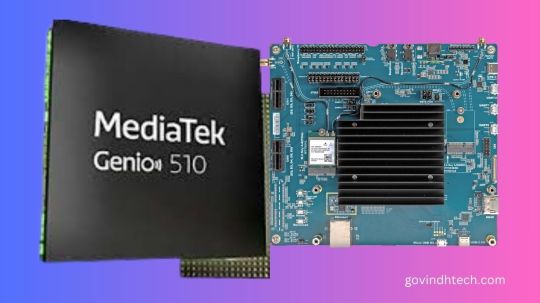
Genio IoT Platform by MediaTek
Genio 510
Manufacturers of consumer, business, and industrial devices can benefit from MediaTek Genio IoT Platform’s innovation, quicker market access, and more than a decade of longevity. A range of IoT chipsets called MediaTek Genio IoT is designed to enable and lead the way for innovative gadgets. to cooperation and support from conception to design and production, MediaTek guarantees success. MediaTek can pivot, scale, and adjust to needs thanks to their global network of reliable distributors and business partners.
Genio 510 features
Excellent work
Broad range of third-party modules and power-efficient, high-performing IoT SoCs
AI-driven sophisticated multimedia AI accelerators and cores that improve peripheral intelligent autonomous capabilities
Interaction
Sub-6GHz 5G technologies and Wi-Fi protocols for consumer, business, and industrial use
Both powerful and energy-efficient
Adaptable, quick interfaces
Global 5G modem supported by carriers
Superior assistance
From idea to design to manufacture, MediaTek works with clients, sharing experience and offering thorough documentation, in-depth training, and reliable developer tools.
Safety
IoT SoC with high security and intelligent modules to create goods
Several applications on one common platform
Developing industry, commercial, and enterprise IoT applications on a single platform that works with all SoCs can save development costs and accelerate time to market.
MediaTek Genio 510
Smart retail, industrial, factory automation, and many more Internet of things applications are powered by MediaTek’s Genio 510. Leading manufacturer of fabless semiconductors worldwide, MediaTek will be present at Embedded World 2024, which takes place in Nuremberg this week, along with a number of other firms. Their most recent IoT innovations are on display at the event, and They’ll be talking about how these MediaTek-powered products help a variety of market sectors.
They will be showcasing the recently released MediaTek Genio 510 SoC in one of their demos. The Genio 510 will offer high-efficiency solutions in AI performance, CPU and graphics, 4K display, rich input/output, and 5G and Wi-Fi 6 connection for popular IoT applications. With the Genio 510 and Genio 700 chips being pin-compatible, product developers may now better segment and diversify their designs for different markets without having to pay for a redesign.
Numerous applications, such as digital menus and table service displays, kiosks, smart home displays, point of sale (PoS) devices, and various advertising and public domain HMI applications, are best suited for the MediaTek Genio 510. Industrial HMI covers ruggedized tablets for smart agriculture, healthcare, EV charging infrastructure, factory automation, transportation, warehousing, and logistics. It also includes ruggedized tablets for commercial and industrial vehicles.
The fully integrated, extensive feature set of Genio 510 makes such diversity possible:
Support for two displays, such as an FHD and 4K display
Modern visual quality support for two cameras built on MediaTek’s tried-and-true technologies
For a wide range of computer vision applications, such as facial recognition, object/people identification, collision warning, driver monitoring, gesture and posture detection, and image segmentation, a powerful multi-core AI processor with a dedicated visual processing engine
Rich input/output for peripherals, such as network connectivity, manufacturing equipment, scanners, card readers, and sensors
4K encoding engine (camera recording) and 4K video decoding (multimedia playback for advertising)
Exceptionally power-efficient 6nm SoC
Ready for MediaTek NeuroPilot AI SDK and multitasking OS (time to market accelerated by familiar development environment)
Support for fanless design and industrial grade temperature operation (-40 to 105C)
10-year supply guarantee (one-stop shop supported by a top semiconductor manufacturer in the world)
To what extent does it surpass the alternatives?
The Genio 510 uses more than 50% less power and provides over 250% more CPU performance than the direct alternative!
The MediaTek Genio 510 is an effective IoT platform designed for Edge AI, interactive retail, smart homes, industrial, and commercial uses. It offers multitasking OS, sophisticated multimedia, extremely rapid edge processing, and more. intended for goods that work well with off-grid power systems and fanless enclosure designs.
EVK MediaTek Genio 510
The highly competent Genio 510 (MT8370) edge-AI IoT platform for smart homes, interactive retail, industrial, and commercial applications comes with an evaluation kit called the MediaTek Genio 510 EVK. It offers many multitasking operating systems, a variety of networking choices, very responsive edge processing, and sophisticated multimedia capabilities.
SoC: MediaTek Genio 510
This Edge AI platform, which was created utilising an incredibly efficient 6nm technology, combines an integrated APU (AI processor), DSP, Arm Mali-G57 MC2 GPU, and six cores (2×2.2 GHz Arm Cortex-A78& 4×2.0 GHz Arm Cortex-A55) into a single chip. Video recorded with attached cameras can be converted at up to Full HD resolution while using the least amount of space possible thanks to a HEVC encoding acceleration engine.
FAQS
What is the MediaTek Genio 510?
A chipset intended for a broad spectrum of Internet of Things (IoT) applications is the Genio 510.
What kind of IoT applications is the Genio 510 suited for?
Because of its adaptability, the Genio 510 may be utilised in a wide range of applications, including smart homes, healthcare, transportation, and agriculture, as well as industrial automation (rugged tablets, manufacturing machinery, and point-of-sale systems).
What are the benefits of using the Genio 510?
Rich input/output choices, powerful CPU and graphics processing, compatibility for 4K screens, high-efficiency AI performance, and networking capabilities like 5G and Wi-Fi 6 are all included with the Genio 510.
Read more on Govindhtech.com
#genio#genio510#MediaTek#govindhtech#IoT#AIAccelerator#WIFI#5gtechnologies#CPU#processors#mediatekprocessor#news#technews#technology#technologytrends#technologynews
2 notes
·
View notes
Text
Unlocking the Future: AI's Hidden Potential in Real Estate

In an era characterized by rapid technological advancements, industries across the board are witnessing transformative changes, and the real estate sector is no exception. As AI continues to permeate various aspects of our lives, its potential to empower the real estate industry remains largely untapped. In this blog post, we'll explore the unique ways in which AI can revolutionize the real estate landscape, unlocking new opportunities and reshaping traditional practices.
Democratizing Access to Real Estate Investment: Traditionally, investing in real estate has been perceived as exclusive to those with substantial capital and industry expertise. However, AI-powered platforms are democratizing access to real estate investment by offering fractional ownership and crowdfunding opportunities. Through algorithms that analyze market trends and assess investment risks, these platforms enable individuals to diversify their portfolios and participate in lucrative real estate ventures with lower barriers to entry.
Sustainable Development and Green Building Initiatives: As sustainability becomes a key priority in urban development, AI can play a pivotal role in advancing green building initiatives. Machine learning algorithms can optimize building designs for energy efficiency, leverage IoT sensors to monitor resource consumption, and forecast environmental impacts. By integrating AI-driven sustainability solutions into real estate projects, developers can minimize carbon footprints, reduce operational costs, and create healthier living environments for occupants.
Enhancing Urban Planning and Smart Cities: AI's ability to process vast amounts of data can revolutionize urban planning and contribute to the realization of smart cities. By analyzing demographic trends, traffic patterns, and infrastructure requirements, AI algorithms can optimize land use, improve transportation networks, and enhance urban resilience. Through predictive modeling and scenario analysis, city planners can make data-driven decisions that foster sustainable growth, mitigate congestion, and enhance quality of life for residents.
Empowering Real Estate Agents with Intelligent Assistants: Real estate agents juggle numerous tasks, from lead generation to property management, often leading to time constraints and inefficiencies. AI-powered virtual assistants can alleviate this burden by automating repetitive tasks, such as scheduling appointments, responding to inquiries, and generating personalized property recommendations. By leveraging natural language processing and sentiment analysis, these intelligent assistants can enhance customer engagement, streamline workflows, and enable agents to focus on high-value activities.
Predictive Analytics for Property Development: AI-driven predictive analytics offer valuable insights into future property trends and demand dynamics, guiding developers in making informed decisions throughout the development lifecycle. By analyzing factors such as population growth, economic indicators, and consumer preferences, AI algorithms can identify prime locations for new developments, optimize property designs, and forecast market demand with greater accuracy. This proactive approach minimizes investment risks and maximizes returns on real estate projects.
Cultural Preservation and Heritage Conservation: Preserving cultural heritage sites and historic buildings is crucial for maintaining a sense of identity and preserving collective memory. AI technologies, such as computer vision and image recognition, can aid in the documentation, restoration, and conservation of cultural landmarks. By digitizing architectural artifacts, analyzing structural integrity, and simulating restoration scenarios, AI contributes to the preservation of cultural heritage for future generations to appreciate and cherish.
Conclusion:
As we navigate the complexities of an ever-evolving real estate landscape, embracing AI's transformative potential is key to unlocking new opportunities and addressing emerging challenges. From democratizing access to investment opportunities to advancing sustainable development initiatives, AI empowers stakeholders across the real estate industry to innovate, adapt, and thrive in a rapidly changing world. By harnessing AI's capabilities, we can build more resilient, inclusive, and sustainable communities for generations to come.
#goel ganga developments#goel ganga developments pune#best builders in pune#premium residential projects in pune#commercial property in pune#new residential projects in pune#ganga platino kharadi#pune builders and developers#commercial property for sale in pune#3 bhk flats in pune kharadi#commercial property#luxury residential projects in pune#residential property in baner#residential projects in pune#2 bhk for sale in kharadi#2bhk for sale#2 bhk flat in pune#3 bhk flats in dhanori pune#3 bhk in dhanori#ganga acropolis baner#goel ganga pune#ganga platinum#ganga aria dhanori#artificial intelligence#real estate projects in kharadi#real estate developer#real esate#AI & Real Estate
4 notes
·
View notes